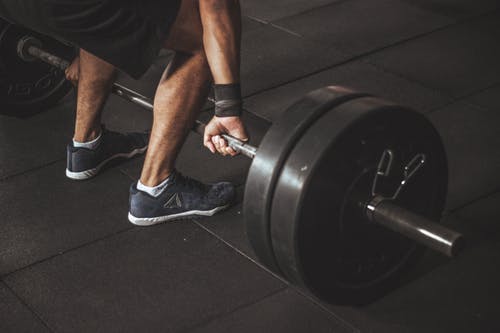Strength is an important ability for athletes. Strength is necessary for sprinting, agility, throwing, hitting, kicking, and jumping. It’s a frequent topic of mine with social media because a lot of people have been conditioned to think about according to the old periodization texts.
In those texts, you spend the bulk of the year developing hypertrophy and gradually transitioning to maximal strength training. You may spend 4-8 weeks of the year with maximal strength training, then you focus on power and then you get in-season and focus on maintenance.
The problem with this approach is that your opportunity to focus on improving strength is really limited. Think about it, strength will improve some due to hypertrophy, but outside of the 4-8 weeks that it is focused on then you are looking at trying to maintain it during the season which may or may not be realistic. This means that there are a lot of opportunities for increasing strength that are being wasted.
This post is going to provide some strategies for year-round maximal strength training. The idea is that strength is something that should be trained year round.
Before we get into the strategies, here are some principles that you need to keep in mind:
- Athletes aren’t powerlifters. They may use the bench press, squat, and deadlift in their training but at the end of the day we don’t care about their performance on these lifts – we care about their ability to transfer their strength to the playing field. This means that, unlike powerlifters, we don’t need to focus our training on the minutiae of correcting weaknesses in aspects of these lifts.
- For an athlete, strength needs to be trained year round. Focusing on this for only four weeks before the season won’t get it done. Athletes need to do some strength work year round. Not only is it a physical ability, but it’s also a skill and it has to be practiced.
- While there are many exercises performed sitting down and lying down, the focus needs to be on exercises that have the athlete exerting force against the ground. This is very important for transfer to the sport.
- There are diminishing returns to strength, but most athletes won’t reach that level. Don’t allow this to be an excuse that prevents athletes from reaching their potential.
With the above principles in mind, below are some strategies that athletes can use to increase their strength.
Just Train Heavy
This is the big one. If athletes aren’t willing to invest in doing this, then no amount of advanced strategies will help them. To improve strength, we must train heavy for an extended period of time. I try to include one maximal strength training session every week during the off-season, ranging from 85-95% of 1-RM focusing on the entire body. For example, below is a sample of what this type of workout might look like:
Monday:
Back squats, 3×4-8×85%
Romanian deadlifts, 3×4-8
Bench press, 3×4-8×85%
Bent-over rows, 3×4-8
Military press, 3×4-8
Wave Training
Wave training is an approach that allows for a great deal of volume to be performed with heavy weights. It is not something that should be done year-round, it is very useful during a peaking phase for strength (i.e. for 4-6 weeks). This type of training is extremely intense, requires a great deal of recovery, and requires that other training modes be adjusted to prevent overtraining and injury.
Wave training involves performing 2-3 sets of the exercise with weights that increase from set to set. Then, the weights are reduced and another wave is performed with slightly heavier weights. For example:
Back squats:
Wave 1: 8×80%, 6×85%, 2-4×90%
Wave 2: 8×82.5%, 4-6×87.5%, 1-3×92.5%
Wave training should only be performed with one exercise per workout. I generally focus on a squat and a press. So with that in mind, a maximal strength workout that utilizes wave training might look like:
Back squats:
Wave 1: 8×80%, 6×85%, 2-4×90%
Wave 2: 8×82.5%, 4-6×87.5%, 1-3×92.5%
Romanian deadlifts: 3×4-8
Bench press: 3×4-8×85%
Bent-over rows: 3×4-8
Military press: 3×4-8
Pause Lifts
Pause lifts involve pausing at the bottom of the lift. For example, when the bar touches the chest in the bench press, at the bottom of the RDL, or at the bottom of the squat. This type of training takes any rebound or cheating out of the exercise and requires the athlete to become strong in the bottom position of the lift.
Pause training is very intense. It is also extremely fatiguing. This means that careful attention must be paid to technique. Normally I have athletes begin this with 50% of their 1-RM, though they can eventually work up to much more than that. This is also a lower volume type of training, generally no more than six repetitions per set. I like to incorporate this beginning with the specific preparation phase of training.
Eccentric Lifts
Eccentric lifts are lifts with an exaggerated descent. I like to coach these with a slow, ten-second descent. The idea is to slowly descend, then explode in the opposite direction. These lifts require a low volume, generally three to six repetitions per set. Begin this type of training with 50% of 1-RM, gradually this can be increased. Like the pause lifts, athletes should focus on their technique as this type of training is very fatiguing.
Bands and Chains
Bands and chains take advantage of an interesting feature of free weights. Free weight exercises become easier as the athlete goes through the exercise’s range of motion. Think about it, during the squat as you stand up it becomes easier to perform the exercise the more you stand up. The bench press works the same way, after passing the sticking point the exercise becomes a great deal easier to do. Bands and chains increase their tension as the range of motion of the lift increases. In other words, the tension that bands and chains provide is greatest at the top of the lift. They also require more control as the bar is lowered. Both tools are very effective at increasing strength, especially on the bench press, deadlift, and squat.
Normally bands or chains are added to one major lift in each workout. It’s not unusual for those exercises to be loaded with 50-80% of 1-RM plus chain or band resistance.
Strength is a really important quality for an athlete. Strength is a foundational ability for most athletic skills. This means it’s extremely important to train over the course of the year.



